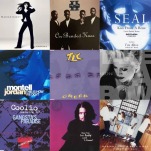“The Force is basically in Star Wars like a religion, and they’re losing their faith in the period that we start the movie,” adds the director. Rouge One appears to be following the Force Awakens template of glossing over the prequel trilogy, which explained away the mystical energy field that is The Force by saying it’s basically like how some people can roll their tongue and some can’t. In the original trilogy, everybody appeared to be aware of the Force and have the potential to use it, not just Jedi warriors.
On that note, Jedha appears to be Star Wars’ answer to Jerusalem or Mecca, with a design that recalls Middle Eastern cities with its street markets, alleyways, and of course, lots of irritating sand. “It was essentially taken over by the Empire. It’s an occupied territory… for reasons we probably can’t reveal,” according to Edwards. “There’s something very important in Jedha that serves both the Jedi and the Empire. It felt very much like something we could relate to in the real world.” (The Star Wars saga has always taken inspiration from actual events: The Ewoks were inspired by the Viet Cong, for example.)
That something that’s “very important” on Jedha is more than likely kyber crystals. First introduced in the novel Splinter Of The Mind’s Eye (as the “kaiburr crystal”), these gems are the power source for lightsabers. Starkiller Base’s super-laser was also sourced from kyber crystals, so it wouldn’t be out of place to assume that the original Death Star’s was as well. In case you haven’t figured it out, kyber crystals are the oil of the Star Wars universe.
Rogue One: A Star Wars Story comes out December 16.








































